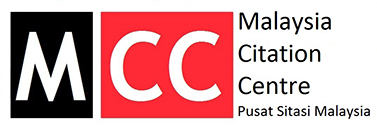Molecular detection of chicken astrovirus in broiler chicken, Malaysia
DOI:
https://doi.org/10.47253/jtrss.v10i2.1001Keywords:
Astrovirus, Chicken, ORF1b gene, RT-PCRAbstract
The emergence of avian diseases can cause major economic problems due to production losses and mortality in domestic poultry. Astrovirus is frequently associated with enteric diseases in poultry, being isolated from cases of runting-stunting syndrome (RSS) of broiler chickens, poult enteritis complex (PEC), and poult enteritis mortality syndrome (PEMS) of turkeys. Avian astrovirus can be detected in chickens from both healthy and poorly performing flocks. In Malaysia, information and reports regarding chicken astrovirus (CAstV) in poultry are limited. The objective of this study is to perform a phylogenetic study on the avian astrovirus isolated from a suspected case in 2019 and to determine the subgroups of avian astrovirus strains that existed in Malaysia. Reverse Transcription Polymerase chain reaction (RT-PCR) was performed based on the partial ORF1b gene and the nucleotide sequence was analyzed. Phylogenetic analysis showed that this isolate was clustered together with CAstV strains from several strain from USA, Malaysia and others. Furthermore, the isolate from broiler chicken showed 97.2% to 99.4% of its nucleotide identity with isolates from the American strains, compared to the previously CAstv Malaysia strain, which shared 94.8% to 95%.Therefore, the current study provides important information on the epidemiology of CAstV and highlights the importance of control strategies against CAstV-infected poultry in Malaysia.Downloads
Published
30-12-2022
Issue
Section
Articles
How to Cite
Molecular detection of chicken astrovirus in broiler chicken, Malaysia. (2022). Journal of Tropical Resources and Sustainable Science (JTRSS), 10(2), 20-23. https://doi.org/10.47253/jtrss.v10i2.1001






